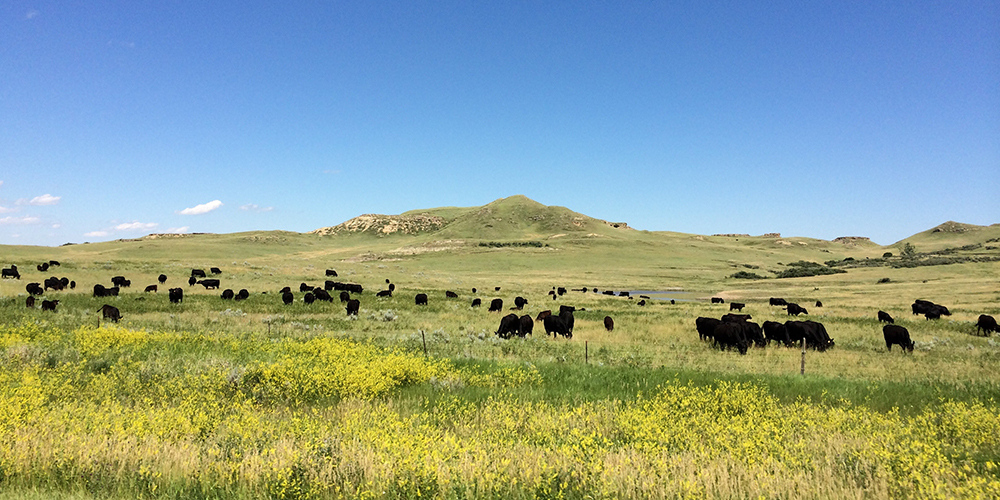Protecting Success: Bagley Risk Management Services
Protecting Success: Bagley Risk Management Services
Blog Article
Recognizing Animals Risk Protection (LRP) Insurance Policy: A Comprehensive Overview
Navigating the world of animals risk defense (LRP) insurance policy can be a complicated undertaking for numerous in the farming sector. This kind of insurance coverage offers a safeguard versus market fluctuations and unpredicted situations that can affect animals producers. By understanding the complexities of LRP insurance coverage, manufacturers can make enlightened decisions that might safeguard their operations from monetary threats. From how LRP insurance policy functions to the various insurance coverage options readily available, there is much to uncover in this thorough guide that can possibly shape the method animals manufacturers approach risk administration in their companies.

Exactly How LRP Insurance Works
Periodically, recognizing the auto mechanics of Animals Risk Protection (LRP) insurance policy can be intricate, but breaking down just how it works can supply clearness for ranchers and farmers. LRP insurance policy is a risk management device designed to shield animals producers versus unforeseen rate decreases. The policy permits producers to establish a protection degree based on their details requirements, choosing the variety of head, weight range, and insurance coverage cost. Once the plan is in area, if market value fall listed below the insurance coverage rate, manufacturers can sue for the difference. It's vital to note that LRP insurance coverage is not a revenue assurance; rather, it focuses exclusively on price threat protection. The insurance coverage period usually varies from 13 to 52 weeks, providing adaptability for manufacturers to select a period that aligns with their production cycle. By making use of LRP insurance, farmers and herdsmans can reduce the financial threats associated with rising and fall market value, ensuring greater security in their operations.
Qualification and Protection Options

When it comes to protection choices, LRP insurance policy uses producers the flexibility to choose the coverage degree, coverage period, and recommendations that best fit their threat monitoring demands. By comprehending the qualification standards and protection alternatives offered, animals producers can make educated choices to manage risk successfully.
Benefits And Drawbacks of LRP Insurance Policy
When examining Livestock Risk Protection (LRP) insurance coverage, it is essential for livestock producers to consider the advantages and downsides inherent in this risk administration device.

One of the main benefits of LRP insurance coverage is its ability to provide defense against a decrease in livestock rates. Additionally, LRP insurance coverage supplies a degree of adaptability, permitting manufacturers to customize coverage levels and policy durations to suit their specific needs.
One constraint of LRP insurance policy is that it does not shield against all kinds of dangers, such as disease episodes or natural calamities. It is vital for producers to thoroughly assess their specific danger exposure and economic circumstance over at this website to establish if LRP insurance is the best danger monitoring device for their operation.
Recognizing LRP Insurance Coverage Premiums

Tips for Making Best Use Of LRP Conveniences
Making best use of the benefits of Livestock Threat Protection (LRP) insurance coverage calls for tactical planning and positive danger monitoring - Bagley Risk Management. To take advantage of your LRP protection, think about the adhering to suggestions:
Regularly Evaluate Market Conditions: Stay informed regarding market patterns and cost variations in the animals sector. By keeping an eye on these aspects, you can make enlightened choices regarding when to purchase LRP protection to safeguard against potential losses.
Set Realistic Coverage Levels: When choosing insurance coverage degrees, consider your production costs, market value of animals, and potential dangers - Bagley Risk Management. Establishing realistic insurance coverage levels ensures that you are effectively shielded without paying too much for unneeded insurance policy
Diversify Your Protection: Rather than depending only on LRP insurance policy, take into consideration expanding your threat monitoring approaches. Integrating LRP with other risk monitoring devices such as futures contracts or options can give thorough protection against market unpredictabilities.
Testimonial and Change Coverage Routinely: As market conditions change, periodically examine your LRP insurance coverage to guarantee it link aligns with your current risk direct exposure. Adjusting coverage degrees and timing of purchases can assist optimize your danger protection approach. By following these tips, you can maximize the benefits of LRP insurance coverage and secure your livestock procedure versus unexpected threats.
Final Thought
Finally, animals risk security (LRP) insurance is a useful device for farmers to handle the economic risks related to their livestock procedures. By understanding exactly how LRP works, eligibility and insurance coverage alternatives, in addition to the advantages and disadvantages of this insurance, farmers can make educated choices to protect their source of incomes. By carefully thinking about LRP costs and applying techniques to make the most of advantages, farmers can minimize potential losses and make sure the sustainability of their procedures.
Animals producers interested in acquiring Livestock Danger Defense (LRP) insurance policy can explore a range of eligibility requirements and insurance coverage alternatives customized to their specific livestock procedures.When it comes to insurance coverage options, LRP insurance provides producers the flexibility to choose the coverage level, coverage duration, and recommendations that ideal match their danger administration requirements.To grasp the details of Livestock Danger Defense (LRP) insurance policy completely, recognizing the aspects affecting LRP insurance policy costs is crucial. LRP insurance costs are determined by different aspects, including the insurance coverage degree picked, the anticipated cost of livestock at the end of the insurance coverage duration, the type of livestock being guaranteed, and the length of the coverage duration.Evaluation and Adjust Insurance Coverage Frequently: As market conditions transform, occasionally examine your LRP protection to guarantee it lines up with your present risk direct exposure.
Report this page